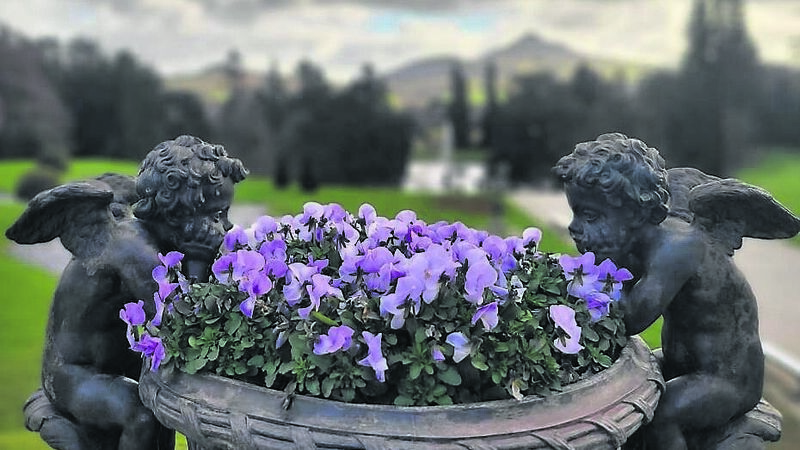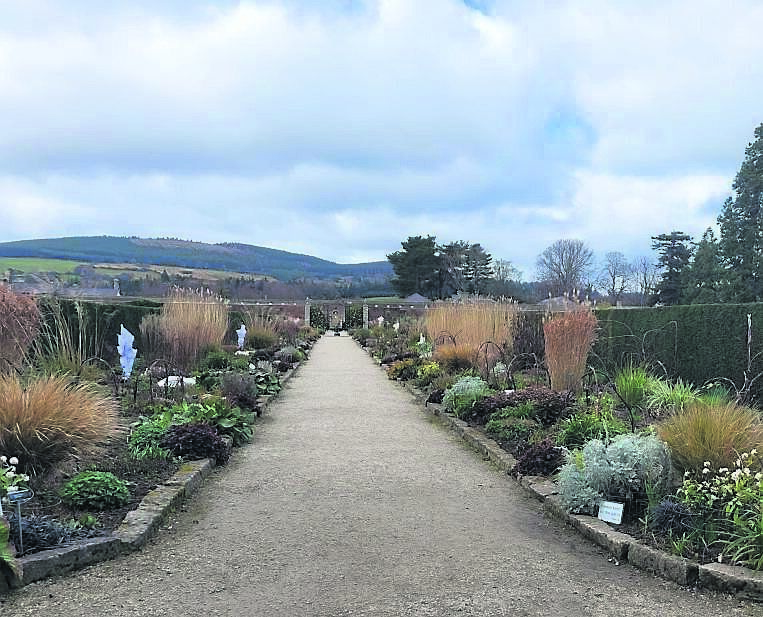You'll want to visit this haven to get ideas for your own garden...

Scenes from Powerscourt House and Gardens in Wicklow.
POWERSCOURT House and Gardens is one of Ireland’s top ten tourist attractions, with an estimated one million visitors to them and their estate each year - and a recent visit to it confirmed why!
Set in the wild Wicklow countryside, with the distinctive outline of the Sugarloaf mountain in the background, are 47 acres of mature woodland and gardens adjacent to Powerscourt House.
The Estate has been home to only two families over the last 400 years. The Wingfield family lived here since 1603 when Richard Wingfield was granted Powerscourt Castle and 40,000 acres as a reward for military achievements by Queen Elizabeth I.
The medieval castle was to be transformed in 1730 when German architect Richard Castle was commissioned to build Powerscourt House around it.
The 68-room mansion adopted a Palladian architectural style and featured baroque dome roofed towers on either side, giving a distinct Italian Renaissance Villa feel to the house. It was sold to the Slazenger family in 1961.

The initial interest in purchasing the estate was to develop hydroelectric power from the highest waterfall (121 metres) in Ireland, which is located on the estate, but this did not prove to be feasible.
In 1974, a major fire destroyed the house and it was not restored and refurbished until 1996 when it opened to the public.
Most of what we see in the gardens today is linked back to the landscape design of architect Daniel Robertson, who also has associations with Johnstown Castle and Wells House in Wexford.
There are some colourful accounts of Robertson giving direction from a wheelbarrow, wielding a bottle of sherry for sustenance, and when the sherry was finished so was work for the day!
It took 100 labourers 12 years to carve out the grand terraces opening up to the lake below at Powerscourt, which were created between 1843 and 1857.
The iconic Italian garden sweeps down to the Triton Lake with its dramatic fountain, the design of which was based on the fountain in the Piazza Barberini in Rome.
The lake features a pair of life-sized winged horses watching over the water, which were made in Berlin in 1869 and form part of the family Coat of Arms.
The Japanese gardens were created in 1908 and feature azaleas and Japanese maples, while the grotto here is one of the oldest features of the gardens.

The tower valley is one of the best locations in which to take in all of the magnificent trees at Powerscourt. The design of the tower itself takes inspiration from a favourite pepperpot from Lord Powerscourt’s dining table!
The trees are quite spectacular throughout the estate, and provide a rich and biodiverse habitat for native wildlife.
The drive into the house is quite spectacular with 250-year-old beech trees lining the avenue and glimpses of the Sugarloaf appearing at intervals.
Lots of trees have been planted on the estate over the last two centuries. At about the time the gardens were being developed, there were lot of introductions of what were considered new and exotic species from all over the Americas and indeed the world.
This means we now have a mature population of more unusual trees in existence here. Douglas firs, giant redwoods, atlantic cedars and Corsican pines to name a few.
The walled garden is one of the oldest parts of the garden and features Ireland’s longest herbaceous border at 120 metres in length.
It is filled with herbaceous perennials which were just beginning to awake from their winter slumber at the time of my visit.
Some ornamental grasses were providing winter interest as they had been left standing, and some hazel stakes which had been left in place over the winter were also providing some interesting shapes and sparking curiosity as to what they would support in the growing year ahead.
It must be a glorious sight in the summer months and will have to be revisited when it is in full colour.
There were also some shrubs, like cotinus, paulownias and daphnes, sprinkled throughout the borders, providing some structure, colour and scent throughout the year, planted among the herbaceous perennials.
In addition to the gardens, there is the house to explore, which is home to the Avoca Terrace Cafe and store with the Design Loft and Nepture by Global Village also in residence.
The Powerscourt Hotel and Spa, golf club and distillery and visitor centre are all located adjacent to the house and gardens.
Powerscourt garden pavilion is a must visit. Open seven days a week, it provides solutions to all of your gardening needs, with a great range of seasonal bedding, seeds, shrubs, trees, indoor plants, barbecues and all you can think of for your outdoor living needs.
For more information on what this magnificent estate has to offer, check out www.powerscourt.com and plan a visit to this jewel in Wicklow’s crown.
Plant of the Week
It is fitting that the plant of the week at Powerscourt is a tree, as it is tree week, and the chosen species is a Douglas Fir (Pseudotsuga menziesii) which is located along the river walk and it is the tallest tree in Ireland, standing at 61.5 metres high.
Douglas Fir, also called the Oregon pine, is native to North America and does very well in the Irish climate. It prefers a deep well drained, neutral to acid soil and full sun.
A large tree getting to heights of more than 100 metres with a tall and slender shape. Most notably, this tree has good size and shaped cones which are useful in festive arrangements.







 App?
App?


